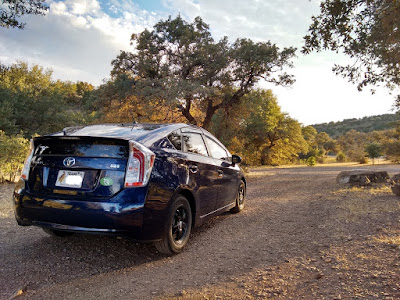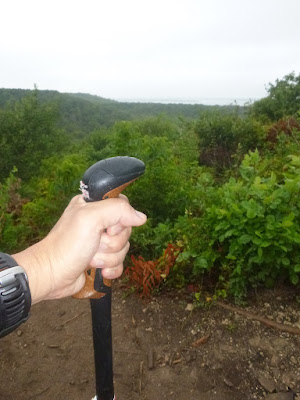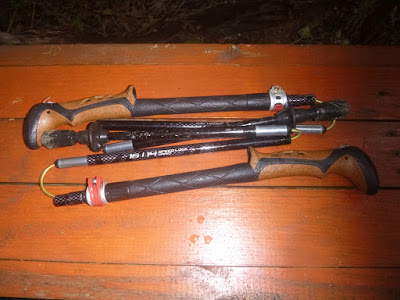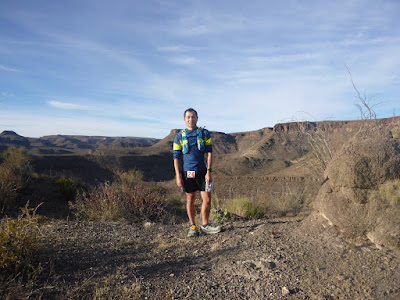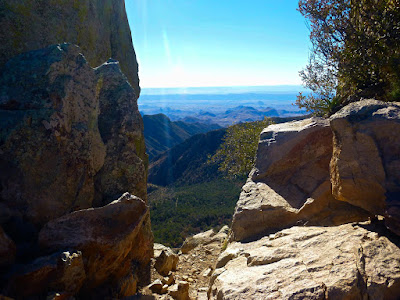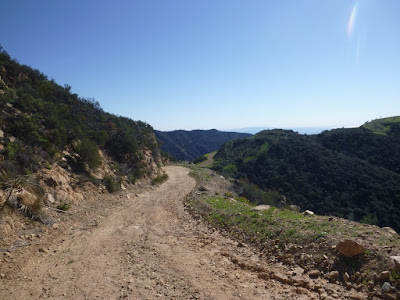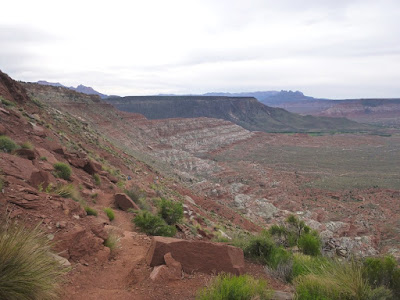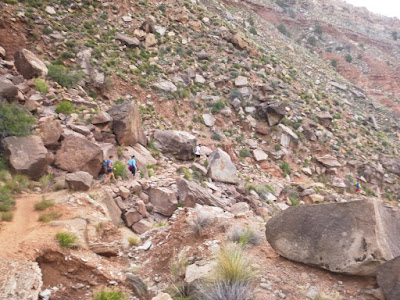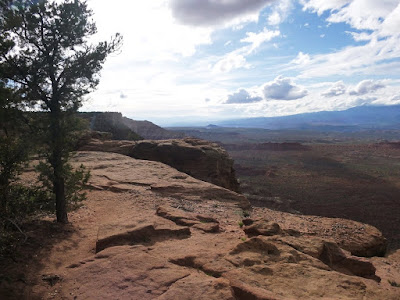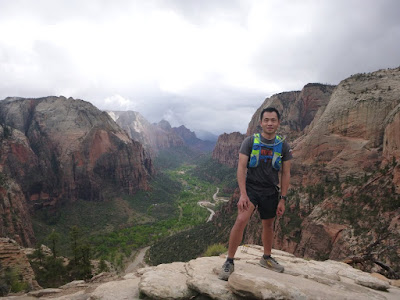I had spent Five long years chasing the glory of running Trail and Mountain Ultras, before the Mountains consumed me whole, leaving behind a barren, burnt out husk a runner that had barely ran a step for half a year before deciding to give Road Running and Marathons a try. When you’ve experienced the life altering journey of traversing a Hundred Miles through extremely tough, wild, and jaw droppingly beautiful Mountain wilderness and landscapes, hallucinated deliriously under a night sky filled with bright and brilliant stars, and managing to come through the other side of the finish line some 34+ hours later; there’s not an experience in this world you would rather chase from then on. It’s been five and a half years since I completed, more like limped across the finish line after 34 hours dragging a dead leg with a pulled groin muscle, the majestic Bryce Canyon Hundred Mile Endurance Run in Utah; the grueling experience, with some 19,000ft of climbing over 102 Miles, was revelatory for me, and I desperately wanted to continue chasing other legendary Hundred Mile footraces in the mountains like Leadville, Wasatch, Western States, and Hardrock to name a few, until they left me utterly broken.
I had no idea what I was doing, pure stubbornness and a willingness, a pathological need to suffer even, was powering me forward through one Trail Ultra after another, in 40+ races over 5 years I threw my body against the trails and somehow made it through the other side, until I ran smack dab into the immovable object known as the Wasatch Front Hundred Mile Endurance Run in Utah; I was stopped cold after trudging 61 Miles, 23 hours, and some 17,000ft of huffing it over the Wasatch Mountain ranges. I realized then, my undisciplined training had finally caught up to me, and I couldn’t progress any further beyond that point unless I did more serious training, but I was stubborn and kept pursuing this destructive high, until, somewhat dramatically, a year later I nearly froze to death mile 60 something into the Run Rabbit Run Hundred Mile in Steamboat Springs, Colorado. I was wandering in the middle of a bone chilling night at nearly 10,000ft altitude in the Colorado Mountains, under dressed for the occasion and not being able to run much for the past dozen miles or so to generate enough body heat. After a couple of hours of drunk walking the race, barely able to keep my eyes open, I finally sat down on the side of the trail and promptly fell asleep, the one thing you’re not supposed to do when you’re on the verge of freezing to death. Eventually a race official riding an ATV patrolling the trails came and woke me up after a few minutes; still not wanting to drop out of the race by accepting a ride back on the ATV, I walked another couple of miles to an Aid Station at Mile 70, sat by the bonfire they had going with a handful of other shivering runners for awhile, and decided I was done with racing Ultras entirely.
That experience left me majorly burned out for nearly a year, hardly running at all, though occasionally going on long thru-hikes in the National Parks, like Big Bend, the Grand Tetons, and Glacier National Park, in order to get my trail and nature fix. Once a runner, always a runner though, and the desire and need to chase after difficult running goals returned; this time I was fixated on that difficult and venerable running goal, the Sub 4 Hour Marathon. Sub 4 has always been one of those long time goals of mine, since running my first Marathon all the way back in 2010 at the Dallas White Rock Marathon, before I got sidetracked by chasing Ultras, now it seemed like a good time as any to break in these trail legs by training for Road Marathons again. More than just some arbitrary time goal though, achieving Sub 4 would prove to myself that I had the drive and commitment to train for, what I would call, an obtainable difficult goal that’s outside of my comfort zone of the trails, and maybe afterwards boost my endurance and confidence enough to race Ultras again. Recognizing that my usual undisciplined, improvised, and mostly solo training, that had me falling short on difficult Ultras, I needed structure and support in my road training, and that led me to the Dallas Running Club.
I’ve ran in plenty of group runs over the years, they’re usually casual runs put up on Facebook, where you show up and would be lucky to know anyone, much less have someone there running at the exact same pace and mileage you’re needing; most of the time I’m either following some dude running way too friggin fast, or by myself in these groups, I guess I’m too much of a social introvert to really gel with a group of total strangers. What attracted me to the Dallas Running Club is that they’re a professional running organization completely run by volunteers, where you can pay an annual fee to be apart of, this gives you access to some basic perks and free entry into various races they hold in the city of Dallas, but to really be a part of the DRC and get to know runners from basically all over the Metroplex, you’d have to sign up for their training programs, from couch to 5K, to Half and Full Marathon programs, that are overseen by certified volunteer coaches and pacers. From there, based on what you’re training for, and using past racing results or time estimates, you’re sorted into a group of folks all seeking to train at similar mileage and paces in organized group runs, twice a week; I liken the process as being sorted into your respective Houses at Hogwarts.
Using a decade old Sub 2hr Half Marathon finishing time as my past result on the online signup form, I was sorted into the 4:00hr Marathon Pace group for their Fall program, while it was what I was looking to achieve at the Dallas Marathon in 2017 that I had already signed up for, in hindsight though, was a huge mistake on my part. Considering I haven’t trained much on road in years, have been on a six month long running funk of extremely low to non-existent weekly mileage, and just came back from a grueling thru-hiking trip at the Grand Tetons and Glacier National Park (covering some 60+ miles in several days) a week earlier, I was probably in for a rude awakening. By then, I was anxious and ready to go though, how hard could it be for someone who was ran 40 something Ultras by now, anyway?
As it turned out, quite hard actually, I was completely out of my depth, and every group run felt like a race, as I was working to get my dormant road legs back and my lungs, accustomed to easy thru-hiking paces for the past 6 months, use to the constant and relentless paces required of the 4:00hr Marathon Pace. The DRC Tuesday speedwork sessions set my lungs on fire, desperately grasping for air every step of the way, while their Saturday Long run hammered my legs and feet, which were used to softer dirt trails, into utter oblivion. During off days, where you’re supposed to train on your own, my legs were too destroyed to run much; I was nothing, if not incredibly stubborn though, and kept hanging onto the group runs by a thread, until I slowly started to acclimate my legs to the road. The Full Marathon program, which usually last 15 weeks, flew by quickly while I was having fun (as much fun as dying, anyway, ha) with my 4:00hr group, which by the end had become a cohesive unit of dedicated runners all encouraging each other towards their running goals; an experience that you’ll be hard pressed to find in a casual Facebook group run.
The end of every DRC Fall program coincides with the Dallas Marathon, and while I fell short that year in 2017, clocking a 4:10hr finish, considering I barely survived my first road training program, I was more than okay with those results, and was eager to return for their Spring Marathon program to further strengthen my training base. After a month long break between training seasons, I returned to the 4:00hr Marathon group feeling hopeful about training for another Sub 4hr attempt at the 2018 Oklahoma City Memorial Marathon in late April, things didn’t go as smoothly as I hoped for, though. Brutally cold weather at the start of the year left me, and many other runners in the DRC groups unmotivated to show up and train in the group runs, and then in February I got side-swiped driving on the freeway; while suffering only minor injuries from the car accident, it still hampered my training for several weeks as I fully recovered from the accident. I managed to finish the Spring program feeling somewhat hopeful of my chances at the OKC Marathon, but it was a terribly hot day, reaching into low 80s with not a cloud in the sky by the end of the race; I barely managed to squeak through under 5 hours with a 4:58hr finish, and with all things considered, was quite okay of those results, chalk it up to a base building season, I told myself.
 |
| At the Finish with my old Pace Leader, Katie |
During the Summer, the DRC holds my favorite training program of theirs, the Summer Fast Track program, where twice a week on Tuesdays and Thursdays, you alternate between blistering track workouts and punishing hill repeats, all under the oppressive 90+ degree summer evening heat in Dallas, Texas. It’s as brutal as it sounds, but there’s no better way to get acclimated quickly to the Texas Summer heat, and while you’re encouraged to go at whatever pace you’re comfortable with, if you’re the competing type, there’s always someone faster in front of you to measure up against. I had a blast that summer on the Fast Track during the weekdays, and spending the weekends running with an Early Fall group on Saturdays, and hitting the trails again on Sundays in order to train for all the long Mountain hiking trips that I would eventually burn myself out on all over again.
A week before the 2018 DRC Fall program was to start in early August, my wanderlust on the trails took over again, and after a summer spent hiking a handful of Colorado 14ers, I had my sights set on the Circumnavigation of Mt Hood in Oregon. The Epic 42 Mile and 10,000+ft of elevation gain Timberline hiking trail around Mt Hood, that would normally take Thru-Hikers 3 days to complete, I decided to do it in One Day along with a friend; through 16 brutal and exhaustive hours, I managed to complete the circumnavigation, and guess what I did the very next day, I got up and hiked another 13 Miles at Mount Rainier National Park, haha. I came home from that trip completely spent and broken, a week later, the DRC Fall program began, I essentially repeated my mistake the previous year going on those long thru-hikes in the National Parks a week before the training program was to start. The Ultra runner and nature lover in me don’t regret taking on those challenging thru-hikes (it’s my moment of Zen, and a way to recharge my batteries from my monotonous and stressful job), but I probably shouldn't have done them so close to the start of the training season.
 |
| On the Timberline Trail at Mt Hood. |
As expected that Fall season didn’t go as well as I hoped it would, it took me like a month just to feel fully recovered from my Mt Hood and Mt Rainier thru-hikes, all while desperately trying to keep up with the 4:00hr group runs. As the group got progressively a little bit faster through the training season, I never quite fully caught up, often having to frustratingly run slower and apart from the group. Wearily, I made it to the end of another Full Marathon training season and to the starting line of the 2018 Dallas Marathon; despite my best efforts, I finished in a disappointing 4:12hrs, falling short of the coveted Sub 4, yet again.
Feeling frustrated, I decided to take a step back chasing a Sub 4 when a Pacing position opened up to co-pace the DRC 4:10hr Spring Marathon group; after several seasons running with the DRC, I decided it would be a good opportunity to give back to the organization and volunteer as a Pace Leader to other runners seeking their own goals, and it would also be a great way to continue building up my own endurance base by running a bit slower than the 4:00hr paces I was struggling all last season at. There’s definitely a bit of pressure to Pace Leading a Marathon group, in having to be committed to showing up twice a week, and consistently hitting specified paces for other runners, instead of just blindly following the Pacer ahead of me, and also motivating your runners and try to keep group runs interesting so that they keep showing up run after training run; it was a process I enjoyed though, and a great way to make some close friends, but not something I would want to do all the time, considering I have goals of my own to chase after.
 |
| Early days with the 4:10 crew |
At the end of the Spring program, instead of a Marathon, I wanted to race a Half Marathon all out instead, so at the 2019 Irving Half Marathon in late April, and with temps approaching the low 80s by the end of the race, I ran at around 8:10 min/mile Tempo paces, desperately trying to hang with a much faster friend for most of the race, till my legs gave out in painful cramps slowing me down a mile before the finish of 1:48:15hrs, beating my previous Half Marathon PR by a whopping 8 minutes! At the end of the Irving Half, I ran so hard that my body went into full convulsive cramps for half an hour, that got so bad that I thought I was gonna have a heart attack, haha, it was all worth it though! While I said I wasn’t gonna do another Marathon at the end of the Spring program, I caught the bug again, and two weeks before the Irving Half, I had signed up for the 2019 Colfax Denver Marathon just three weeks later. I didn’t have much expectations coming into Denver, I was still a bit worn out from the Irving Half, and I didn’t know how the Mile High Altitude would affect me during the race; ended up walking away from that Denver pleasantly surprised though, in a well executed race that had me battling all the way to a 4:20hr finish, not another Sub 4, but I was happy to take it.
 |
| At the Denver Marathon |
Running a bit slower for the spring season and working on building a larger endurance base turned out to be the right move for me, as my favorite part of the year was approaching, the DRC Summer Fast Track program was back, and it seemed like I had boundless energy to float along the track at eye-watering 6 min/paces, and fly up and down the hills with reckless abandon; all under the blissful 90+ degree Texas Summer heat. By the end of that Summer’s Fast Track program, I had managed to clock my first ever Sub 7 min/mile (in 95 degree heat!), and hungry for more speed, I forgo signing up for another 4:00Hr Marathon program, and instead, followed the friend I paced with at the Irving Half Marthon, perhaps foolishly, into the DRC 1:40Hr Half Marathon program. To get a sense of how much faster the 1:40Hr Half is from the 4:00Hr Full, it’ll be like running the equivalent paces of a 3:20Hr Marathon, with Interval workouts reaching down into 6 min/mile ranges; while I managed to hit those paces on the Fast Track, the Half program was 15 weeks worth of progressively harder workouts, that I wasn’t quite sure my legs could survive. I convinced myself I was ready though, or was I just blindly following that friend, but whatever, I wanted nothing more than to see just how fast my legs could carry me now.
While I joined the 1:40hr Half program, I wasn’t abandoning my quest for Sub 4hr Marathon, instead of targeting the Dallas Marathon in early December, I would instead sign up for the Houston Marathon in late January, giving me an extra month and a half of training, in order to fit several huge goals I had in the Fall Season, while giving me enough time to recover and train for a Marathon. First, my wanderlust on the trails returned again, after a Summer spent hiking various Mountain trails in the San Juan Mountains area of Colorado, I had my sights set on a long-time dream of mine, the 42-48 Mile (depending on the route you take) double crossing of the Big Ditch, otherwise known as the Grand Canyon R2R2R in mid September. In order to not destroy my legs completely, and ruin another chance at Sub 4, I had been spending the prior three months methodically and furiously Power-Hiking training on the trails on Sundays, utilizing Trekking poles in order to divert as much stress and impact out of the grueling thru-hike to my arms and upper body as possible to relieve my legs of the full force of the 48 Mile thru-hike, and hopefully have them recover faster after the trip. After 16+ GLORIOUS Hours running and hiking through the belly of the beast, I had finally completed the Grand Canyon R2R2R, traveling from the Bright Angel Trailhead to the North Kaibab Rim and then back to Bright Angel, with my legs hopefully feeling not too much worse for wear.
 |
| At the Coconino Overlook near the North Kaibab Rim |
All those months of Power-hiking training with Trekking poles paid off during the Grand Canyon R2R2R, as rather miraculously, I was back up and running with my 1:40Hr Half group by the next Saturday; and now onto the next Fall goal of 2019, shoot for the moon at the DRC Half Marathon in early November, and try to go for a Sub 1:40hr finish with my other group members. Even with nearly 2 months of dedicated training for the DRC Half Marathon, I felt the residual effects of the Grand Canyon R2R2R for another couple of weeks, and couldn’t train as well as I would’ve liked leading up to the race, but no matter, I managed a still impressive 1:43:41hr finish, taking off nearly 5 minutes from my Irving Half Marathon results in the spring, while not having to go through full body convulsive cramps at the end as well!
 |
| At the DRC Half Marathon |
After the DRC Half Marathon, we still had another month left of training on the program, as others continued their training for the Dallas Marathon or Half in December, and instead of racing Dallas this year, I got the opportunity to co-pace the first 15 and a half Miles of the 4:30hr finish group of the race, which was a lot of fun, the Dallas Marathon, being my hometown race, is not something I want to miss. With a satisfactory end of a successful training season, capped with a turn of holding that pacing stick at the Dallas Marathon, and buoyed by a strong showing at the DRC Half Marathon earlier, now it was business time, the hunt for Sub 4 at the Houston Marathon got my undivided attention from then on.
 |
| Right before the start of the Dallas Marathon |
I’ve been wanting to do the Houston Marathon for years now, but always hesitated signing up; with many area runners still hungover from the Dallas Marathon, the usually bitter cold and stormy weather in December, depressingly short daylight hours, and the upcoming holidays meant that I would be hard pressed to find anyone to train with that month. I was a Man on a Mission though, and fortunately my boss let me take off 2 hours a day for most of December in order to still be able to train in the daylight hours. As for my training plan, I was loosely following the Hanson Marathon Method, doing back to back weekend medium-long runs of no more than 16 Miles, while focusing a lot on speedwork on the weekdays. After ending the peak of my training on a 51 Mile week, I felt as ready as I ever would be, now just have to get through the two week calm before the storm taper period before Houston.
I don’t always do taper well, that highly motivated runner for the past 15+ weeks is nowhere to be found, as I’m struggling to make it out the door for a run, and repeatedly questioning and doubting myself that if I overdid it or not with training, as my body is trying to repair itself from a long training cycle, and all the body aches and creaks become magnified. I hardly ran during the week of Houston, leading to fears of loss fitness, but my Achilles tendons were barking at me through the taper period, so it was better safe than sorry to rest them before the race. Speaking of resting, some free advice, NEVER stay at a Hostile before a big goal race, I hardly slept the night before Houston while stuck in a room with 5 other guys with creaky bunk beds and hurricane force snoring, I bolted out of the place by 3am in the morning, to desperately try and get a couple hours of decent rest in my car at a parking garage near the race; so, don’t be a cheapskate and find a decent hotel to sleep for the night.
Never try anything new before a race as the well worn saying goes, especially when it comes to shoes and nutrition (or staying in Hostiles!) , well, just before Houston I had shelled out for some pricey Spring Canaberry Energy Gels (20 gels for $50) that’s made with real food, with no added sugar or maltodextrin, and promises no GI distress for smooth and consistent energy for Marathons; since they were so pricey, I had only tested them once on a training run, the consistency is sorta like baby food, but the advertised energy gains seemed real enough to give it a go, and stuffed 9 of these huge gel packets into my two running belts. For shoes, I’m a huge Altra Running fan, and exclusively wear nothing but them, I had brought along the Altra Torin 4.0 Plush and a pair of Altra Escalante 1.5s, and was still undecided which to wear on race day; do I go with the added cushioning of the Torins that I may have to fight against later into the race as my form suffers, or do I go with the less cushioned but more responsive Altra Escalante, risking that my quads might get too hammered late in the race? I ended up choosing neither of them, and instead bought a pair of Altra Escalante 2.0s at the Race Expo the day before Houston; I’ve read that the new cushioning in that model, while stiffer and less responsive than the 1.5s, provides more protection for longer runs, making it an ideal compromise between my other two shoes, so with a thrown-in free Altra T-shirt (a kick-ass old-school running shirt, I might add), I was sold, and laced them up for Houston. Do as I say, not as I do, is another one of those well worn sayings when giving advice, ha.
 |
| I'd like to think I bought that T-shirt and the shoes came free |
It’s funny how all the worrying that goes on before a big race goes out the window the moment you cross the starting line of a Marathon, and that’s what I love most about racing, it forces you to live in the moment, highly attuned to your body, while the mind, being pumped full of highly oxygenated blood, experiences the ecstasy of “flow”; the past is forgotten, and the future is only 4 hours away, you are more present than you’ll ever be while racing. The first 8 crowded Miles of Houston, before the Half Marathon runners split off in a different course, went by in a blur, as I felt like I was being carried along with the stampede. The most vivid memory I have of that stretch is of a beautiful tree-lined neighborhood street that had branches on either side overlapping that entire street, and with the sun rising amongst a cloudless brisk morning sky, the burst of sun rays through those overhanging tree branches were so gorgeous that I wanted to whip out my phone in the middle of the race to capture what would surely have been the perfect Instagram Marathon pic.
Initially worried about the stiffness of the Altra Escalante 2.0s when I took it on an easy 1.5 Mile run the day before the race, it was no longer a concern once the race got going, these shoes were made for going fast, and with strong and rested legs, it was ridiculous how little effort I needed to cruise along at an 8:45 min/mile pace during the chaotic first 8 miles of the race. Once the Half Marathoners split off in a different course, I started to relax, and with fatigue starting to be more noticeable, I let my foot off the gas a little and tried to keep it slightly under a 9:00 min/mile pace to conserve my legs for later into the race, fearing hitting the wall hard above all else. I arrived at the Half Marathon mark with a solid 7 and a Half minute buffer for Sub 4, feeling remarkably strong, maybe those Spring Energy Canaberry gels I was taking every 25 minutes, along with Saltstick Fastchews, were working as my energy levels had been feeling smooth all race.
First real moment of panic in the race came at Mile 14, while the cold and brisk weather that day were ideal for racing, with temps in the 40s, I wasn’t sweating much at all, and desperately needed a pit stop; fortunately, there was no wait at the bank of porta-potties at Mile 14, and I only lost a minute of time. As an Ultra runner used to generous cutoffs and a unique racing culture as a whole that mainly values distance, and doesn’t place much of an emphasis on running times; being obsessed with mere minutes, down to the very seconds of your pace, when chasing time goals, is still a foreign concept to me. Banked minutes are more precious than gold in Marathons, only spend it when you absolutely have to, and the rent was fast coming due.
I was cruising along, enjoying the raucous crowd support and seeing Houston for really the first time, while maintaining close to a 9 min/mile pace as possible, until the first warnings of the dreaded Wall was approaching on Mile 18. I gradually slowed to a 9:10 pace, then 9:15, then 9:21, then BAM, I was stuck in the 9:30 ranges from Miles 21-24, and just couldn’t press my legs to run any faster; frequent burst of ferocious headwinds that knocked runners off course didn't help either. My quads and calves were tightening, fearing cramps if I tried pushing too hard, I had no choice but to start drawing on my dwindling hoard of banked minutes, in order to buy myself a chance to gut it out at the end of the race; to stave off all out panic, I started singing out loud the Rocky theme song the race had blaring from speakers during this stretch. With my reserve of Spring Energy Gels and Saltstick Fastchews gone by Mile 23, all the Gatorade and Beer along last 5 Mile stretch were a welcome electrolytic boost to ward off cramps, did I mention the fun and raucous crowd support?!
The moment of reckoning had arrived, my banked minutes were all but gone after Mile 24, it was now or never, I had spent 2 long years chasing Sub 4, and if I didn’t nab it now, I would’ve had to wait another agonizing 10 months full of doubt to get another shot at the Chicago Marathon; cramps be damned, it was time to PUSH! I brought Mile 25 down into the 9:15 range, and that had seemed to have loosened the dam on my waterlogged legs, as I hit the Mile 26 mark on my GPS watch (which was 0.3 miles over the official race distance), finally managing a pace under 9 min/mile again. When I hit the official Half Mile till the finish mark, with absolutely no seconds to spare, I gunned it, and broke out into a sprint of 8 min/miles and under. With the crowds and towering downtown buildings seemingly coalescing my vision into a funnel, hyper focused on the finish, I crossed the finish line of the 2020 Chevron Houston Marathon with an official time of 3:59:29 Hours! My God, I’ve never felt so bewilderingly elated after crossing the finish line of a race in my life, as I had been in that moment, realizing I had pulled off a Sub 4 with such razor thin margins; so, I guess this is what a Runner’s High feels like.
 |
| After the finish at Houston |
When I decided to finally call it quits on chasing the Mountains and Ultras all those years ago, giving up what I considered to be one of my great passions in life, I did so because I hardly considered myself to be a runner anymore, more like a glorified endurance Hiker; when did I get to point where I could hardly run several miles at a time without getting winded? Either I had to start all over to try and find my lost running legs, or be content with being mediocre at races, I chose the former and went back to road training; in my mind, I could only consider myself to be a true runner again, by breaking that 4:00hr Marathon mark. Come to think of it, the most successful Ultra Runners usually come from a long background of building speed and endurance on the road and track, while I did the exact opposite, spending long stretches running trails and Ultras before jumping to the road; never having to really worry much about speed and endurance, because I was mostly just focused on slogging through Ultras to finish them, until I was no longer able to do so… The Mountains have a way of exposing your weaknesses and vulnerabilities, like that.
On this long and winding road to Sub 4, I have rediscovered my confidence in running, and I like to think in myself as well, while meeting a lot of new friends along the way with the Dallas Running Club; that, more than anything, was well worth spending these last two long years chasing Sub 4. At the moment, I’m not entirely sure where I’ll take my running from here, do I keep chasing lower and lower Marathon time finishes, with some wild eyed goal towards making it into the Boston Marathon someday? Or do I eventually take my hard fought speed and endurance gains to chase after my first love with trails and Ultrarunning? One things for sure, I’ll keep building on the gains I’ve made, and make road training and the running community around it a fixture in my plans; too many great races I want to see and experience, and I’m gonna need a strong pair of legs to take me there.
























